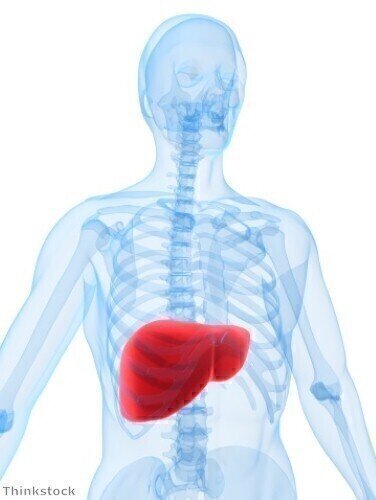-
 New imaging technique can detect liver disease
New imaging technique can detect liver disease
Bioanalytical
New imaging technique can detect liver disease
Sep 20 2013
A new type of imaging therapy may be able to detect liver disease in young people without the need for a painful and invasive liver biopsy, experts claim.
Specialists at the Cincinnati Children's Hospital Medical Center say that the new, non-invasive imaging technique, which is known as magnetic resonance elastography (MRE), can help medical professionals to accurately detect fibrosis in children with chronic liver disease, which is a growing problem around the world and now affects 13 per cent of adolescents.
Obesity is a major risk factor for non-alcoholic fatty liver disease (NAFD), which can lead to progressive liver disease and liver failure, explained Dr Stavra Xanthakos, a gastroenterologist at Cincinnati Children's Hospital Medical Center and lead author of the study.
"Because many paediatrics patients in the United States with NAFLD are severely obese, MRE is likely to be superior to ultrasound-based elastography in this population, as ultrasound-based methods are less reliable in severely obese patients," she explained.
During the study, which has been published online in the Journal of Pediatrics, the experts evaluated 35 children and teens between the ages of four and 20 and found that MRE was highly accurate in detecting more advanced fibrosis in children with chronic liver disease, including severely obese patients.
The study author noted that although needle biopsy is standard practice for evaluating liver fibrosis, it presents risks for the patient and high costs, and is often frightening for children and teens.
Contrastingly, MRE can measure tissue stiffness, using low frequency sound waves in combination with magnetic resonance, which involves the combination of magnetic fields and radio frequency waves to produce diagnostic images - all of which can be accomplished in a few minutes using the MR scanner.
Dr Xanthakos said the results show the "exciting potential" of MRE to improve clinical care and reduce dependence on liver biopsies, though it is not yet ready for widespread clinical use.
She added: "We hope to study MRE in patients to test how well changes in imaging correlate with changes in liver stiffness after treatment or lifestyle changes."
Digital Edition
Chromatography Today - Buyers' Guide 2022
October 2023
In This Edition Modern & Practical Applications - Accelerating ADC Development with Mass Spectrometry - Implementing High-Resolution Ion Mobility into Peptide Mapping Workflows Chromatogr...
View all digital editions
Events
May 15 2024 Birmingham, UK
May 19 2024 Brno, Czech Republic
May 21 2024 Lagos, Nigeria
May 23 2024 Beijing, China
May 28 2024 Tel Aviv, Israel













